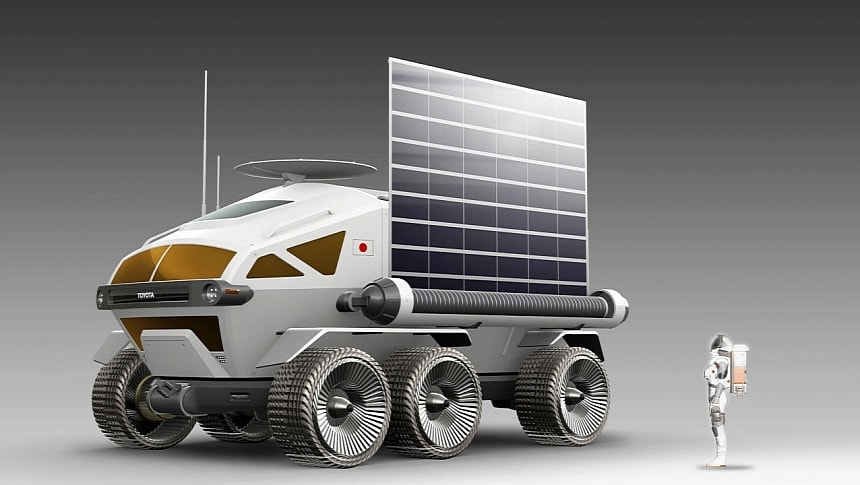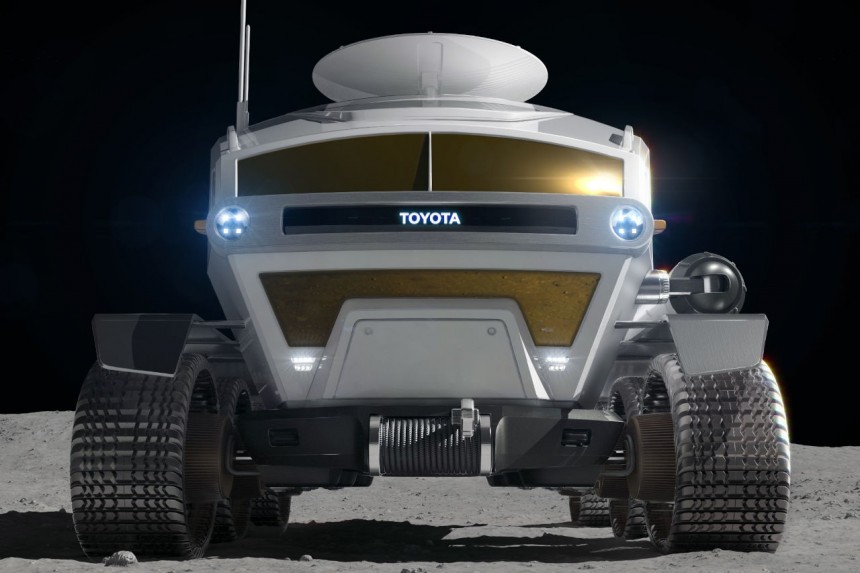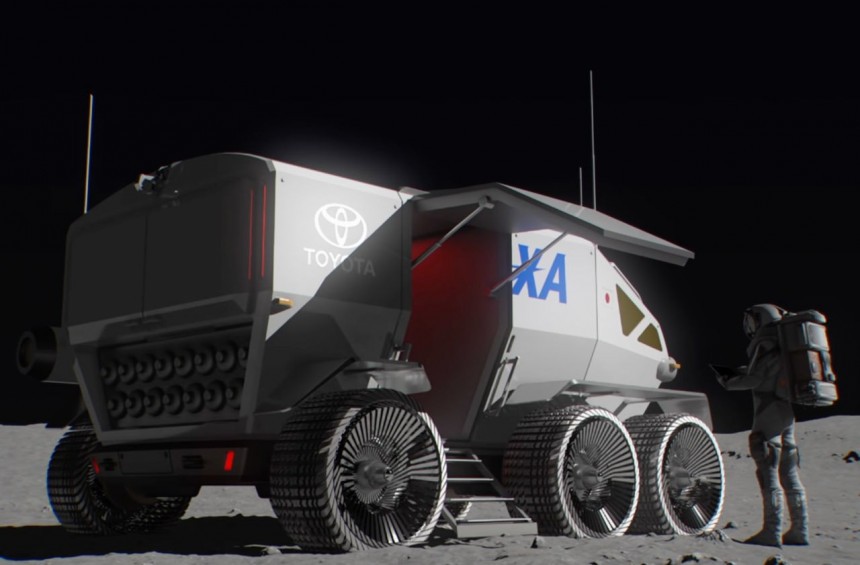Earlier in April, NASA decided on the final three groups of companies that will be competing for the Lunar Terrain Vehicle (LTV) contract. What that means is that soon enough humanity will have once more, a vehicle specifically meant to travel on the surface of the Moon. But the LTV is not the only extra-terrestrial vehicle NASA is eyeing.
The LTV program calls for an unpressurized rover capable of carrying two fully-suited astronauts and cargo up to a total weight of 1,100 pounds (500 kg). What unpressurized means is the rover will not have a cabin, so it won't be able to provide life support for Artemis astronauts. And that, of course, limits the distance the LTV can travel, and the time astronauts can spend in the open.
But humanity's plans for the Moon go far beyond what the initial stages of Artemis have up their sleeve. For a long period of time, humans will stay up there, and we'll need a lot more specialized and complicated gear to do our thing. Including pressurized rovers that could accommodate astronauts with no suits on and double as a habitat for longer stays out in the open.
To date, a single company in this world has decided to start work on creating such a thing: Japanese carmaker Toyota.
The world's largest car company for many years in a row, Toyota calls its product the Lunar Cruiser. It announced it in the summer of last year as the most advanced such design ever conceived.
Named in honor of the carmaker's iconic Land Cruiser, the lunar rover will be powered by a hydrogen powertrain built using the lessons learned with the Mirai fuel-cell vehicle. It should give the rover a total range of 6,200 miles (almost 10,000 km), "even with the limited amount of energy that can be transported to the Moon."
It's about the size of two minibusses standing side by side, but because it needs to have life support systems, it can only accommodate two astronauts in a pressurized volume of just 459 cubic feet (13 cubic meters). In case of emergencies and for brief periods of time, the crew complement can be increased to four people.
Toyota hasn't provided any other update on the Lunar Cruiser since announcing it last year, but a piece of news that surfaced last week from NASA and its Japanese counterpart, JAXA, has us hoping Toyota will be the world's first carmaker to send a proper land vehicle to another world.
NASA and JAXA signed last week "an agreement to advance sustainable human exploration of the Moon." The centerpiece of the agreement is the design, development, and operation of a pressurized vehicle for use on the Moon.
NASA says, rightfully so, that this is the only way to ensure astronauts can travel to relevant distances from their home base to conduct science. It's also the only proper way to sustain those astronauts so far from their landing site for missions that could last as much as 30 days.
The partnership between the two agencies will see Japan build the rover and NASA launch it. The two sides didn't specifically name Toyota's design as the object of the deal, but given how it is literally the only one currently in the works, the Lunar Cruiser is probably it.
The rover will be used by both NASA and JAXA, with the American side planning to deploy it on-site at the lunar South Pole as soon as the Artemis VII mission, currently scheduled to lift off in 2031. The rover will be used by the U.S. for as much as ten years.
In exchange for their help, the Japanese will get a seat on an upcoming Artemis mission, in a bid to make Japan the first country other than the U.S. to land a human on the Moon. And this bit of info had us raising an eyebrow for a bit.
You see, the Artemis II mission taking off next year, the one that will only circle the Moon and not land there, has a Canadian national in its crew. And that kind of gave us the impression a Canadian would be the first non-American to land there on Artemis III as well.
The identities of the people flying that mission, the first flight to land on the satellite under the new program, were not announced, but given Japan's statement, a Canadian will not be on board – the mission will either be all-American, or it will have a Japanese in its ranks.
Separately from surface missions to the Moon, Japan will also have a national on the Gateway space station that will be built in orbit around the satellite starting later this decade. Japan itself is contributing the environmental control and life support systems for the station, and it also handles part of the cargo transportation.
We'll keep an eye out for developments on this story, especially on Toyota, and will update sa soon as we learn more on the pressurized rover project.
But humanity's plans for the Moon go far beyond what the initial stages of Artemis have up their sleeve. For a long period of time, humans will stay up there, and we'll need a lot more specialized and complicated gear to do our thing. Including pressurized rovers that could accommodate astronauts with no suits on and double as a habitat for longer stays out in the open.
To date, a single company in this world has decided to start work on creating such a thing: Japanese carmaker Toyota.
The world's largest car company for many years in a row, Toyota calls its product the Lunar Cruiser. It announced it in the summer of last year as the most advanced such design ever conceived.
Named in honor of the carmaker's iconic Land Cruiser, the lunar rover will be powered by a hydrogen powertrain built using the lessons learned with the Mirai fuel-cell vehicle. It should give the rover a total range of 6,200 miles (almost 10,000 km), "even with the limited amount of energy that can be transported to the Moon."
Toyota hasn't provided any other update on the Lunar Cruiser since announcing it last year, but a piece of news that surfaced last week from NASA and its Japanese counterpart, JAXA, has us hoping Toyota will be the world's first carmaker to send a proper land vehicle to another world.
NASA and JAXA signed last week "an agreement to advance sustainable human exploration of the Moon." The centerpiece of the agreement is the design, development, and operation of a pressurized vehicle for use on the Moon.
NASA says, rightfully so, that this is the only way to ensure astronauts can travel to relevant distances from their home base to conduct science. It's also the only proper way to sustain those astronauts so far from their landing site for missions that could last as much as 30 days.
The partnership between the two agencies will see Japan build the rover and NASA launch it. The two sides didn't specifically name Toyota's design as the object of the deal, but given how it is literally the only one currently in the works, the Lunar Cruiser is probably it.
The rover will be used by both NASA and JAXA, with the American side planning to deploy it on-site at the lunar South Pole as soon as the Artemis VII mission, currently scheduled to lift off in 2031. The rover will be used by the U.S. for as much as ten years.
You see, the Artemis II mission taking off next year, the one that will only circle the Moon and not land there, has a Canadian national in its crew. And that kind of gave us the impression a Canadian would be the first non-American to land there on Artemis III as well.
The identities of the people flying that mission, the first flight to land on the satellite under the new program, were not announced, but given Japan's statement, a Canadian will not be on board – the mission will either be all-American, or it will have a Japanese in its ranks.
Separately from surface missions to the Moon, Japan will also have a national on the Gateway space station that will be built in orbit around the satellite starting later this decade. Japan itself is contributing the environmental control and life support systems for the station, and it also handles part of the cargo transportation.
We'll keep an eye out for developments on this story, especially on Toyota, and will update sa soon as we learn more on the pressurized rover project.










